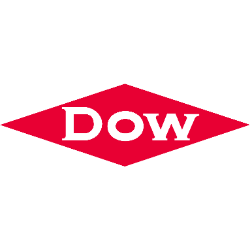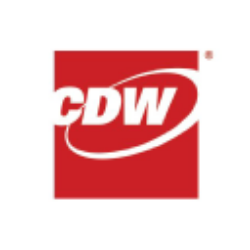- Home
- May 30,2025
- Huntington Ingalls Industries Inc (HII)

Huntington Ingalls Industries, Inc. - NYSE:HII - Comprehensive analysis
Huntington Ingalls, a wide-moat company and former subsidiary of Northrop Grumman, is the largest military shipbuilder in the United States. While the company benefits from extraordinarily long planning horizons and budget visibility, minor shifts in the timing of major programs can result in uneven quarterly results, which we believe have impacted the stock. Nevertheless, Huntington Ingalls' strong connections to the US Department of Defense, its role as the sole provider of nuclear aircraft carriers and turbine-powered amphibious landing ships, and its position as one of only two producers of nuclear submarines and Arleigh Burke-class destroyers for the US Navy position the company for consistent profits well into the future. The long-cycle shipbuilding business does not yield the highest margins in the defense contracting sector. However, it exemplifies the conditions that create a durable competitive advantage and provide decades of revenue and profitability visibility. The large shipbuilding sector offers extensive planning horizons and budget visibility for decades, although minor timing shifts in significant programs, such as aircraft carriers, can lead to uneven quarterly results. We anticipate some potential fluctuations later this decade, contingent on forthcoming revisions to US Navy budgets. The timing of work on two America-class amphibious assault ships expected to commence around 2027 may or may not counterbalance the decline in work on the third Ford-class aircraft carrier, the Enterprise. This concern is more operational than financial and should not impact the company as long as it maintains sufficient visibility into similar work at each of its two shipyards as projects near completion. Huntington Ingalls' products take years to construct and are typically produced in small quantities. The potential for margin improvements as the company progresses down the learning curve is limited, especially since the government negotiates the price (and consequently, the profit margin) of each ship upon agreement to purchase. This close relationship between the buyer and the company distinguishes Huntington Ingalls from other defense contractors, as it is largely insulated from macroeconomic or market risks. In 2024, the company reported only $7 million in revenue from commercial customers out of a total of $11.5 billion. Additionally, the Defense Department has a vested interest in maintaining multiple shipyards in operation and ensuring their financial viability. This policy results in a balanced distribution of work between Huntington Ingalls and General Dynamics, mitigating risk and distributing rewards. While the firm may experience uneven revenue and profits in certain quarters and years due to the multiyear production cycles of its large products, we believe that long-term investors will be rewarded, particularly with the anticipated growth in submarine and destroyer revenue.
Free evaluation through quantitative algorithms Huntington Ingalls Industries, Inc. - NYSE:HII
Growth-Scoring Model Detail
Total Revenue Growth Over Prior Year | 0.71 | Market 31 Sector 41 |
Gross Profit Growth Over Prior Year | -11.91 | Market 7 Sector 13 |
EBITDA Growth Over Prior Year | -11.44 | Market 10 Sector 20 |
EBITA Growth Over Prior Year | -14 | Market 12 Sector 23 |
EBIT Growth Over Prior Year | -13.86 | Market 14 Sector 25 |
Earnings from Cont. Ops. Growth Over Prior Year | -19.24 | Market 19 Sector 23 |
Net Income Growth Over Prior Year | -19.24 | Market 20 Sector 24 |
Normalized Net Income Growth Over Prior Year | -12.28 | Market 16 Sector 26 |
Diluted EPS before Extra Growth Over Prior Year | -18.21 | Market 20 Sector 24 |
A/R Growth Over Prior Year | -5.16 | Market 20 Sector 32 |
Inventory Growth Over Prior Year | 11.83 | Market 90 Sector 85 |
PPE Net Growth Over Prior Year | 3.68 | Market 57 Sector 53 |
Total Assets Growth Over Prior Year | 8.26 | Market 76 Sector 69 |
Tangible Book Value Growth Over Prior Year | 117 | Market 95 Sector 91 |
Common Equity Growth Over Prior Year | 14 | Market 76 Sector 73 |
Cash from Ops. Growth Over Prior Year | -59.48 | Market 3 Sector 6 |
CAPEX Growth Over Prior Year | 25.7 | Market 83 Sector 76 |
Dividend per Share Growth Over Prior Year | 4.58 | Market 52 Sector 73 |
Levered Free Cash Flow Growth Over Prior Year | -87.91 | Market 1 Sector 3 |
Unlevered Free Cash Flow Growth Over Prior Year | -80.52 | Market 2 Sector 4 |
Profitability-Scoring Model Detail
Gross Margin % | 12.57 | Market 10 Sector 11 |
SG&A Margin % | 6.88 | Market 30 Sector 19 |
EBITDA Margin % | 8.59 | Market 11 Sector 32 |
EBITA Margin % | 6.71 | Market 15 Sector 36 |
EBIT Margin % | 5.76 | Market 10 Sector 36 |
Earnings from Cont. Ops Margin % | 4.77 | Market 16 Sector 48 |
Net Income Margin % | 4.77 | Market 17 Sector 48 |
Net Income Avail. for Common Margin % | 4.77 | Market 17 Sector 49 |
Normalized Net Income Margin % | 3.48 | Market 12 Sector 43 |
Levered Free Cash Flow Margin % | 0.68 | Market 23 Sector 27 |
Unlevered Free Cash Flow Margin % | 1.19 | Market 21 Sector 25 |
Return on Assets % | 3.56 | Market 32 Sector 41 |
Return on Capital % | 5.56 | Market 35 Sector 47 |
Return on Equity % | 12.56 | Market 43 Sector 57 |
Return on Common Equity % | 12.56 | Market 42 Sector 58 |
Total Asset Turnover | 0.99 | Market 82 Sector 64 |














